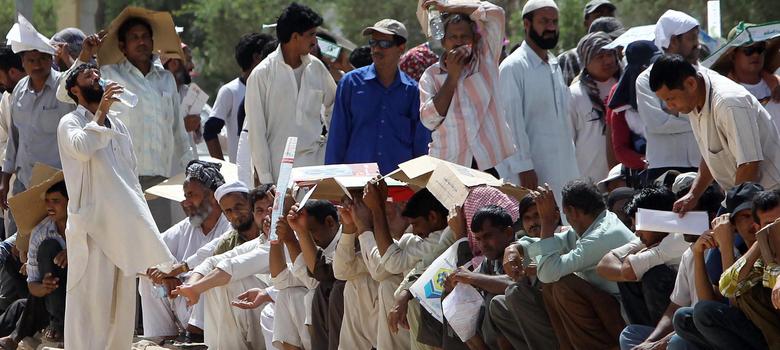It's no secret that the Gulf is hot: temperatures regularly hit 50°C and summer lasts just about half of the year. But at the moment this is still habitable weather. That's not to say the heat hasn't been a killer. Every year, a few immigrants end up dead because they have been forced to work in the heat outdoors even in the summer months. But if outdoor workers avoid the afternoon hours, they are able to manage.
Too hot to be habitable
That won't last forever. A study by Jeremy S Pal and Elfatih AB Eltahir of the Massachusetts Institute of Technology finds that human beings will not be able to survive there just 65 years from now. "Our results expose a specific regional hot spot where climate change, in the absence of significant mitigation, is likely to severely impact human habitability in the future," the study, published in the journal Nature Climate Change, said.
The research was based on computer modelling, which looked at how the climate of the region would change based on current global warming trends. The Gulf, in particular, fits into a uniquely vicious cycle because of its current climate. It's too hot for most people to inhabit comfortably even now, prompting most residents to use air conditioners, which in turn continue to do damage to the environment. The wealth of the region also leads to a more callous approach to nature, meaning in a place where very little fresh water is available, the countries tend to rely on desalination, leaving behind a huge carbon footprint.
Qatar, Kuwait, the United Arab Emirates, Bahrain and Saudi Arabia all come in the top 10 of per capita carbon emitters, with Qatar's emissions, as an example, being double those of the United States. And while all the countries are making some efforts to be more environmentally friendly, the supply of easy cash means the imperative simply isn't there for these countries.
And this means the climate in the region is set to get even worse, not long from now. By 2070, within the lifetimes of many who currently live in the region (including seven million Indian citizens), extreme heatwaves will begin kicking in. After that, days that are currently considered the hottest of the summer will start becoming a daily feature.
At this point, it would be so hot outside that even the fittest humans would not be able to cool itself by sweating. The less fit, including the youngest and the oldest, will be even more likely to succumb to the heat. The study is based on wet bulb temperature, the best measure to estimate whether the human body can shed off the heat, by sweating or even moving into the shade. According to the study's models, after 2100 cities in this region will regularly breach the threshold, meaning it will be so hot that the body will stop trying to cool off and instead start heating further, leading to hyperthermia and potential death.
This foresees a a situation where the average temperature will be so high that going out in afternoon hours might be altogether impossible, which is not to say that outdoor work – done primarily by immigrants from the subcontinent – will be comfortable to do even in the evenings or overnight.
This also means that the holy Hajj pilgrimage for Muslims, which involves making their way down to Mecca in Saudi Arabia and worshiping outdoors from sunrise to sunset might become physically impossible. Air conditioning will help for those who can afford it, but even that is clearly not a sustainable long-term solution.
“We would hope that information like this would be helpful in making sure there is interest [in cutting carbon emissions] for the countries in the region," Eltahir said. "They have a vital interest in supporting measures that would help reduce the concentration of CO2 in the future."












